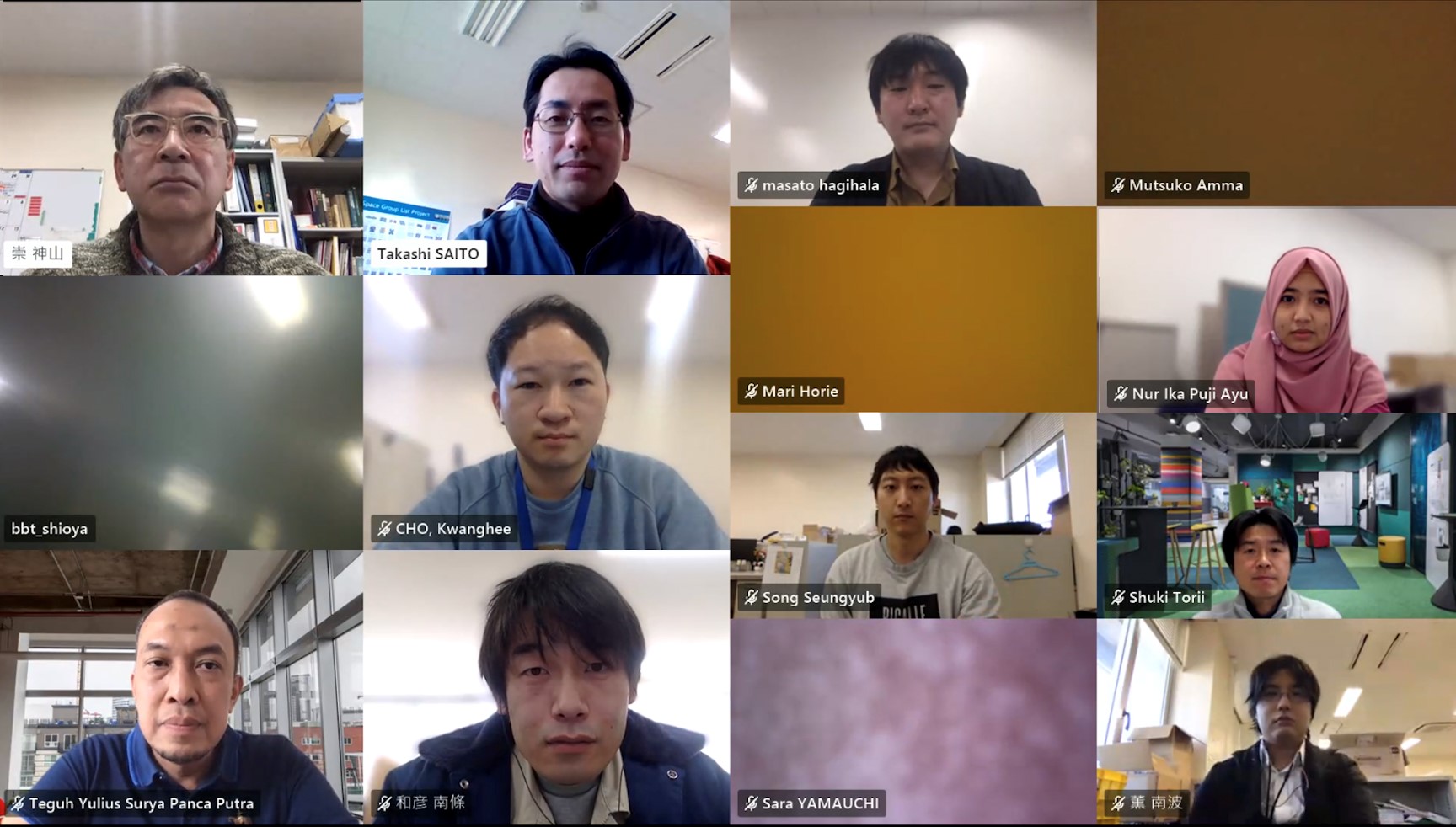Materials Structure Science Program > Neutron / Muon > Structure science group
Structure science group
The Structure Science Group is investigating the atomic arrangements of materials using the wave characteristic of neutrons to understand their physical properties and materials functions. For this purpose, we have developed the world's highest-resolution neutron diffractometer. We also developed a dedicated neutron instrument for the study of structural changes of electrodes in rechargeable batteries during charging/discharging reaction.

● Experience the fun of structure science research
Solid-state materials are classified into 'crystal' with high regularity and 'amorphous/glass' with low regularity. The differences in the arrangement of atoms and ions are what give solid-state materials their wide range of functions such as catalysts that facilitate chemical reactions, magnetic substances such as high-capacity storage media (hard disks), ionic conductors that are applied to gas sensors and storage batteries, thermoelectric materials, and superconductors. Researchers worldwide are creating materials with certain properties by combining atoms and ions, and they are trying to understand the theory behind why those properties emerge.
Our group is studying the structures and properties of substances and their relationships with functions of those substances by using two different neutron diffraction devices to analyze the arrangement of atoms and ions, an important aspect in materials research and structural property research. By using neutrons as a probe, and X-rays, synchrotron radiation, NMR, and RAMAN as needed, we can find how to express the functions of a material.


Accurate structural analysis
The arrangement of atoms is studied with the highest accuracy by using the scattering and interference of neutrons with a wavelength equal to the distance between the atoms. The neutron diffractometer, SuperHRPD, which has the highest resolution of any ones in the world, can measure a tiny structural change that cannot be detected by conventional instruments.
 On June 21, 2008, we achieved the world's greatest resolution in a diffraction experiment using silicon. The figure above compares our data with that obtained by Sirius, which was a world-leading diffractometer (operated until March 2006) at the High Energy Accelerator Research Organization. The sharper the peak, the higher the resolution. The resolution of the SuperHRPD is three times better than that of Sirius, the Bragg diffraction profile does not have a large tail and is symmetric, and the 1/10 width is improved more than ten times.
On June 21, 2008, we achieved the world's greatest resolution in a diffraction experiment using silicon. The figure above compares our data with that obtained by Sirius, which was a world-leading diffractometer (operated until March 2006) at the High Energy Accelerator Research Organization. The sharper the peak, the higher the resolution. The resolution of the SuperHRPD is three times better than that of Sirius, the Bragg diffraction profile does not have a large tail and is symmetric, and the 1/10 width is improved more than ten times.


Research on storage batteries
While X-rays are scattered by electrons, neutrons are scattered by the nucleus of the atom. As a result, a small change in a material such as lithium, which is a light element, can be detected. In addition, the structural information of a particular part can be obtained by using the difference in the scattering power of isotopes. We are developing a neutron diffractometer called SPICA, under the auspices of the "Research & Development Initiative for Scientific Innovation of New Generation Batteries (RISING)" at the New Energy and Industrial Technology Development Organization (NEDO), and we are analyzing the change in the atomic arrangement of lithium and other atoms in charge and discharge reactions at the atomic level.




Development of a structural analysis method and Z-Code
We are researching a new structural analysis method to be used to conduct cutting-edge research in materials structure science with neutron diffractometers at J-PARC. In addition, we are developing Z-Code, a suite of software for the new method.
Download the Z-Rietveld GUI ver.
Download the Conograph GUI ver
 Z-Rietveld GUI(Grafical user interface)
Z-Rietveld GUI(Grafical user interface)
● To students who are considering Sokendai (the Graduate University for Advanced Studies)
One positive aspect for graduate students in the Materials Structure Science Program in the School of High Energy Accelerator Science at Sokendai (the Graduate University for Advanced Studies) is that they have access to the world's most state-of-the-art probes (neutrons, muons, synchrotron radiation, and positrons) while at the same time receiving thorough instruction in the classroom. All graduate students will have many opportunities to give presentations at domestic and international academic meetings and travel overseas to improve their skills and gain various experiences. In addition, the university promotes interaction with domestic and foreign researchers and students. The graduate student can get support from a research assistant (RA) system, a scholarship system, and a tuition waiver. Our group is composed of people with degrees in physics, engineering, chemistry, and mathematics and we are looking for students who are eager to conduct new research in these fields. All the graduates from our group find employment at universities and research institutes after graduation.
● Members
| MORI, Kazuhiro | Professor |
| SANO, Asami | Professor (Cross Appointment/JAEA) |
| SAITO, Takashi | Assoc. Professor(In charge of SPICA, SuperHRPD) |
| TORII, Shuki | Engineering Counselor(In charge of SuperHRPD, SPICA) |
| KAMIYAMA, Takashi | Professor Emeritus, Researcher(SuperHRPD, SPICA) |
| HAGIWARA, Masato | Associate Researcher(SuperHRPD) |
| SHIOYA, Masahiro | Engineer (BBT) |
| NANBA, Kaoru | Reseacher (WDB) |
| Nur Ika Puji Ayu | Student(SOKENDAI) |
| Seungyub Song | Student(SOKENDAI) |
● Links
2021.06.03
H-イオンの低温高速伝導を実現
2021.03.25
環境に優しい⾼効率冷却システムを実現する新酸化物エネルギー材料の発⾒ ― 巨⼤圧⼒熱量効果による熱制御の実証 ―
2021.01.25
希土類を含まない世界最高クラスの酸素イオン伝導体を発見 -燃料電池・センサー・電子材料等の開発を加速-
2020.12.02
日本中性子科学会の技術賞を物構研メンバーがW受賞
2020.03.13
世界最高クラスの新型電解質材料を発見 -燃料電池・センサー・電子材料等の開発を加速-
2018.12.14
コバルト酸化物でスピンの量子重ね合わせ状態を創出 -量子演算素子の基礎となる励起子絶縁状態の実現へ-
2017.04.20
数学のグラフ解析を用いて、新物質の結晶構造を解く手法を開発
2017.03.21
コバルト酸鉛の合成に世界で初めて成功し、新規の電荷分布を発見 -鉛、コバルトの両方に他に例のない電荷秩序、 イオン価数制御の新手法により機能性酸化物の開発に期待-
2016.06.30
充放電しているリチウム電池の内部挙動の解析に成功 ―中性子線を用い非破壊かつリアルタイム観測により実現―
2012.10.19
プラセオジム・ニッケル酸化物の高い酸素透過率の原因を解明-燃料電池など、性能向上へ
2011.09.29
全固体型リチウム電池を目指して
2011.08.01
世界最高のリチウムイオン伝導率を示す超イオン伝導体の開発 - 高安全性を有する全固体型リチウム電池の実用化に光 -
2008.07.24
世界最高性能の中性子回折 ~ 記録を塗りかえた6年間の技術開発 ~
2008.05.30
J-PARCの中性子回折実験装置が世界最高の分解能を達成
2007.10.18
中性子の100メートル走 ~ 世界一精密な中性子回折装置 ~
2002.10.03
金属の疲労破壊や亀裂を探る ~ パルス状中性子の利用 ~
2001.07.25
中性子回折法による新型電池の研究 私たちの研究 2 - 加速器を用いた中性子回折法 -
2012.09.07
蓄電池解析専用の中性子ビームラインSPICA完成
2012.02.28
新設ビームラインSPICAに中性子ビームを導入
2010.02.23
A high resolution, high intensity neutron diffractometer
